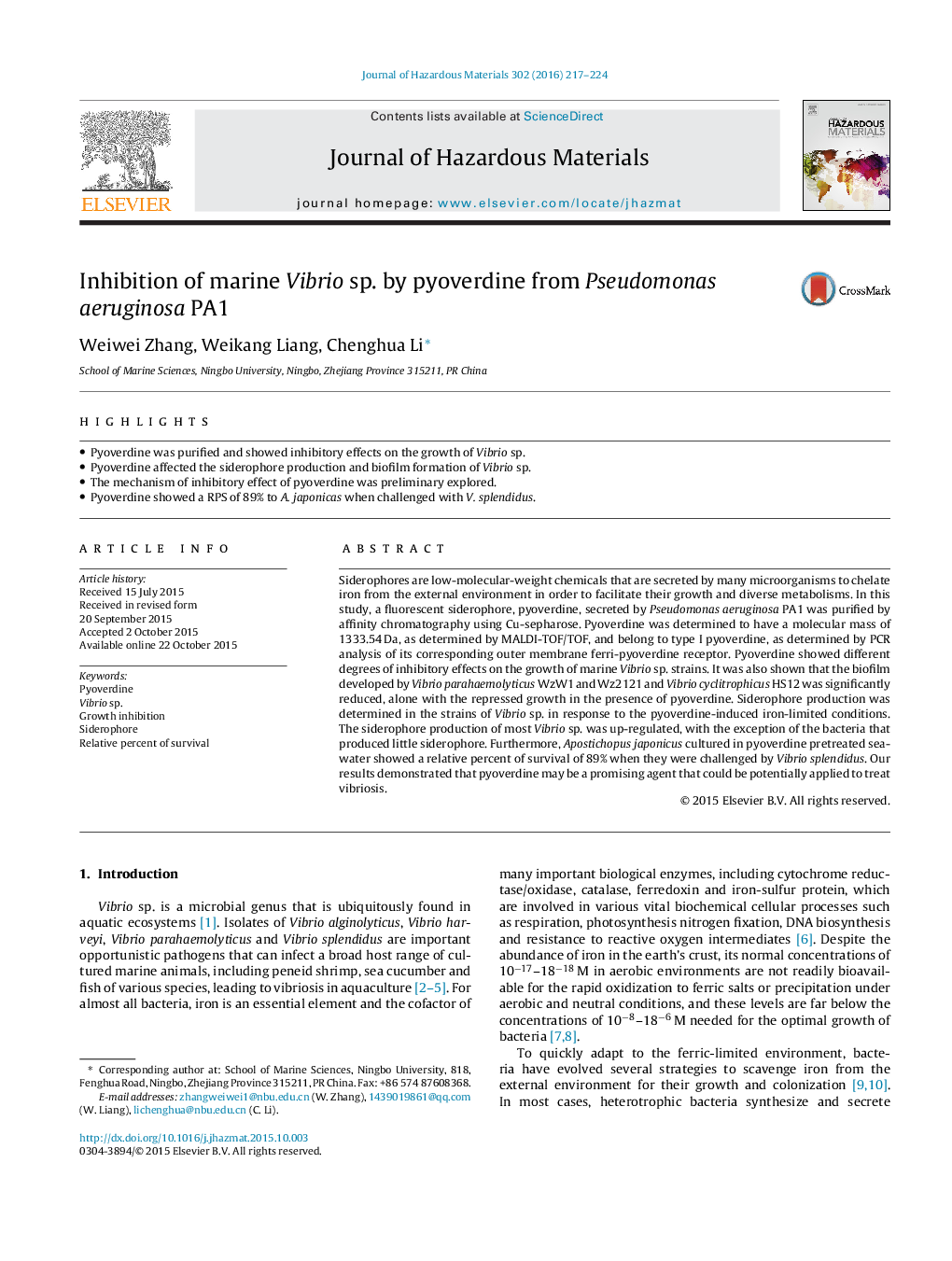| Article ID | Journal | Published Year | Pages | File Type |
|---|---|---|---|---|
| 575613 | Journal of Hazardous Materials | 2016 | 8 Pages |
Abstract
Siderophores are low-molecular-weight chemicals that are secreted by many microorganisms to chelate iron from the external environment in order to facilitate their growth and diverse metabolisms. In this study, a fluorescent siderophore, pyoverdine, secreted by Pseudomonas aeruginosa PA1 was purified by affinity chromatography using Cu-sepharose. Pyoverdine was determined to have a molecular mass of 1333.54Â Da, as determined by MALDI-TOF/TOF, and belong to type I pyoverdine, as determined by PCR analysis of its corresponding outer membrane ferri-pyoverdine receptor. Pyoverdine showed different degrees of inhibitory effects on the growth of marine Vibrio sp. strains. It was also shown that the biofilm developed by Vibrio parahaemolyticus WzW1 and Wz2121 and Vibrio cyclitrophicus HS12 was significantly reduced, alone with the repressed growth in the presence of pyoverdine. Siderophore production was determined in the strains of Vibrio sp. in response to the pyoverdine-induced iron-limited conditions. The siderophore production of most Vibrio sp. was up-regulated, with the exception of the bacteria that produced little siderophore. Furthermore, Apostichopus japonicus cultured in pyoverdine pretreated seawater showed a relative percent of survival of 89% when they were challenged by Vibrio splendidus. Our results demonstrated that pyoverdine may be a promising agent that could be potentially applied to treat vibriosis.
Related Topics
Physical Sciences and Engineering
Chemical Engineering
Chemical Health and Safety
Authors
Weiwei Zhang, Weikang Liang, Chenghua Li,
